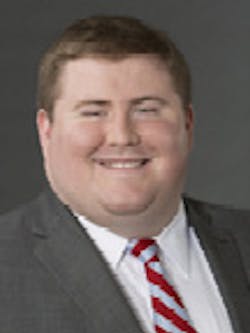3 ways to protect your child's inheritance without a premarital agreement
Andrew Tucker, JD, CFP
John K. McGill, JD, CPA, MBA
Eating broccoli, wearing a mouth guard, getting your fiancé to sign a prenup—some things in life are great ideas, but our kids don’t always see them the same way we do.
Short for prenuptial agreement, a prenup is the agreement and memorialization of what is to happen with certain types of property in the event of a divorce. Talking to a child about executing a premarital agreement is difficult. Convincing his or her fiancé to sign the agreement without creating bad feelings is even more challenging. The good news is that, while parents cannot control what happens to property accumulated in the marriage, inherited property doesn’t have to become marital property.
Here are three strategies that can be used to stop in-laws from claiming gifts and inheritances.
All in the family (partnership)
Controlling access to family money with a family limited partnership (FLP) is a benefit that is often not considered. Doctors can contribute nonretirement assets to the partnership in exchange for general and limited partnership interests. The doctor maintains the general partnership interest to make management decisions, while providing the children with a limited partnership interest that cannot be transferred or sold. Since the interest cannot be co-titled, this requires the children to keep the property as separate property in the event of a divorce.
It’s all in the ages
Doctors who want to control inheritance after death but are not interested in gifting have a few options that can be used in order to limit their children from commingling assets with their spouses. Unlike the FLP, however, these options can be folded into current revocable trust documents and amended at any time. Most trusts establish an age when children can request a portion of the trust property on a “no questions asked” basis. This is a fairly standard paragraph, but it doesn’t have to be written this way. By modifying this paragraph with some simple changes, doctors can limit the control that children have over commingling these assets.
One way to do this is by increasing the stated ages. In this circumstance, rather than children having access to large portions of the trust at age 25 to 35, a doctor may elect to stretch the ages. The children may inherit one third at age 40, a second third at age 50, and the remainder at age 60. The children can still benefit from the trust property (subject to other rules written in the trust), but cannot commingle the other property with their spouses until much later in life.
Don’t forget about the grandchildren
If there are permanent concerns about a child’s spouse, there is a permanent solution. Rather than giving children the power to take a portion of the trust at certain ages, they can be completely skipped in favor of grandchildren. In this circumstance, the children can have limited access to the trust for specific needs. But most of the money automatically flows to the next generation, without any opportunity for the children to commingle the property with their spouses. Sometimes referred to as a “dynasty trust,” this arrangement can heavily limit control over how much property is distributed from the trust over time, and can limit the people who are able to draw off of the property.
It is important to note that these strategies are highly complicated. They need to be reviewed by an estate planning attorney before amendments and changes are executed that can trigger significant tax consequences or invalid transfers at the state level if they’re not done correctly.
Andrew Tucker, JD, CFP, and John K. McGill, JD, CPA, MBA, provide tax and business planning for the dental profession. They publish the McGill Advisory newsletter through John K. McGill & Company Inc., a member of the McGill & Hill Group LLC. This is dentists’ one-stop resource for tax and business planning, practice transition, legal, retirement plan administration, CPA, and investment advisory services. Visit mcgillhillgroup.com.


